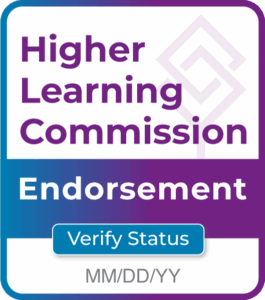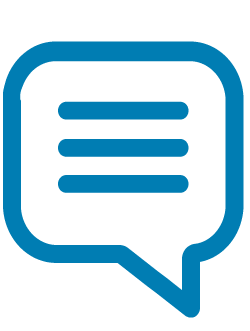Endorsement Application Process for Providers
The Endorsement demonstrates the quality of a Provider as trustworthy credential partners for addressing workforce learning initiatives and developing learners’ skills to fill workforce needs.
Endorsed providers have demonstrated that they meet professional standards of quality in a crowded marketplace.
The Endorsement may open more opportunities to provide workforce-related short-term credential offerings through contractual relationships with colleges, universities, professional associations, and/or directly to learners.
On This Page
Application Readiness
The Endorsement application is divided into four parts:
- Provider Stability, Operational Strengths, & Short-Term Workforce Credential Offerings
- Section 1: Provider’s Name and Contact Information
- Section 2: Provider’s Financial Information
- Section 3: Provider’s Information and Data Security
- Section 4: Provider’s Affiliations and Recognitions
- Section 5: Information About Provider’s Offerings
- Alignment of Educational Offerings to Workforce Learning Needs and Assurance of Learning
- Section 6: Alignment Processes – Ensuring Currency and Relevancy of Offerings to Identified Workforce Learning Needs
- Section 7: Assurance of Learning – Identification and Assessment of Desired Knowledge, Skills, and Abilities
- Learner Information and Protections
- Section 8: Learner Information and Protections
- Section 8: Learner Information and Protections
- Agreement to HLC’s Credential Lab Provider Commitments
An endorsed provider demonstrates:
- It is a legitimate organization that has appropriate authorization to operate in the United States.
- It has sound financial and legal conditions based on thresholds set by HLC.
- It addresses data privacy and security in its technology and operations.
- SOC 2 – Type 1 or Type 2 is required if provider collects learner PII.
- ISO 27001 – Recommended; not required.
- It is publicly identified in the Credential Engine if the provider issues short-term credentials directly to learners.
- It has verified recognitions or references from other organizations that have approved, certified, or recognized the provider organization and/or its offerings or resources. (Optional)
- It shares sufficient information about its offerings to define the scope of evaluation.
An endorsed provider demonstrates:
- Workforce, employer, or industry information to identify workforce learning needs that inform offerings.
- It has processes in place to ensure alignment of offerings to workforce learning needs.
- It has sufficient and regular review processes to ensure ongoing currency and relevancy of offerings given labor market changes.
- It identifies the knowledge, skills, and abilities (competencies) addressed in its offerings.
- It defines achievement requirements for the offerings.
- Method(s) of learning assessment or validation of the knowledge, skills, and abilities to assure that learners meet the achievement requirements.
An endorsed provider demonstrates:
- It has publicly available learner-facing information and disclosures.
- It has an educational and/or business continuity policy (or risk management plan) and process should the provider be unable to continue with its operations or sunsets an offering.
- It has a learner complaint policy and process.
- It has a learner refund policy and process.
- It collects learner Personally Identifiable Information.
- If it does, has a learner data protection policy and process.
- If it does, has a learner data protection policy and process.
- That if the provider issues, manages, and stores learners’ credential records, it has a learner records and retention policy and process.
- Learner accessibility:
- Has an accessibility (e.g., Universal Design of Learning) policy and process.
- Provides accessibility accommodations to learners (if applicable).
- It has a learner use of Artificial Intelligence (AI) disclosures and policies.
Application Steps
Completing the Application
The process to receive the Endorsement involves two steps.
- A self-readiness evaluation that forms the bulk of the work required to gather the necessary supporting materials to complete the application.
- Submit a completed application for an evaluation by HLC.
Self-Readiness Evaluation
Gather information and begin completing the application.
Listen to a recorded webinar for more in-depth instruction or join a live Q&A session to answer any outstanding questions.
Preparing Materials for Uploading
Some prompts will ask for uploads of supporting evidence. For these elements, please prepare and upload the application and supporting evidence as a single PDF.
Each section of the PDF should be bookmarked, indexed and searchable with links to internal documents that allow for ease of movement across the document’s sections and subsections.
- Include pagination and organizational strategies that make it easy for evaluators to navigate.
- Printed documents should not be scanned to create a PDF.
Personally Identifiable Information (PII)
Personally identifiable information (PII) is any information about an individual learner, employee, Board member, owner, or other individual that allows the individual to be specifically identified. This includes, but is not limited to: name, address, telephone number, birthday, email, social security number, bank information, etc. PII does not include de-identified or aggregate information.
Examples of documents that could contain PII could include samples of learner records, information about learner receivables, or resumes that include personal contact information.
When submitting documents to HLC, the Provider should carefully consider whether a document containing PII must be included in order to demonstrate that the Provider meets the Endorsement Standards. In many cases, the Provider can use a different document to demonstrate that it meets the Endorsement Standards.
If a document must be included in order to demonstrate that the Provider meets the Endorsement Standards, then the Provider is expected to redact any PII on the document prior to submission to HLC.
**Providers are not expected to redact or identify information or documents where the only PII is names and work contact information for individuals other than learners.
If the Provider determines that redaction of PII will interfere with the evaluative value of the document, please clearly identify the document as containing PII (for example, through a cover page or prominent notation on the document).
Submitting Materials
Upload the completed Application and Evidence file as one document. In the message box, please include the Provider name. Please do not send any documents to HLC via email.
Applications deadlines for 2026:
January 23, 2026
April 24, 2026
July 24, 2026
Next Steps
Endorsement Application Evaluation
Once the application packet is received by HLC, it is first reviewed for completeness and then distributed to a team of HLC evaluators. This is one or two Endorsement Evaluators, trained and with subject matter expertise to provide HLC a recommendation on whether the Provider meets the Endorsement Standards.
The results from the review are sent back to HLC for final determination.
Reviews typically are completed between four to six weeks from the deadline date.
If endorsed, the Provider receives an e-mail notification followed by instructions for use of the Mark of Endorsement.
If not endorsed, the Provider will receive the feedback from the evaluation and may re-apply as part of a future cohort.

Earning the Endorsement
An Endorsement is valid for 24 months from the date it is awarded. Providers will need to complete a renewal process to maintain their endorsed status at the end of the endorsement period.
Fees
Endorsement Application Fee (HLC is offering an introductory rate for first-year applicants.)
$10,000Endorsement Application Fee After September 1, 2026
$15,000Annual Dues
(following the first year anniversary)
$5,000
Endorsement Renewal Fee (every 24 months)
$1,500
Glossary

Related Resources

